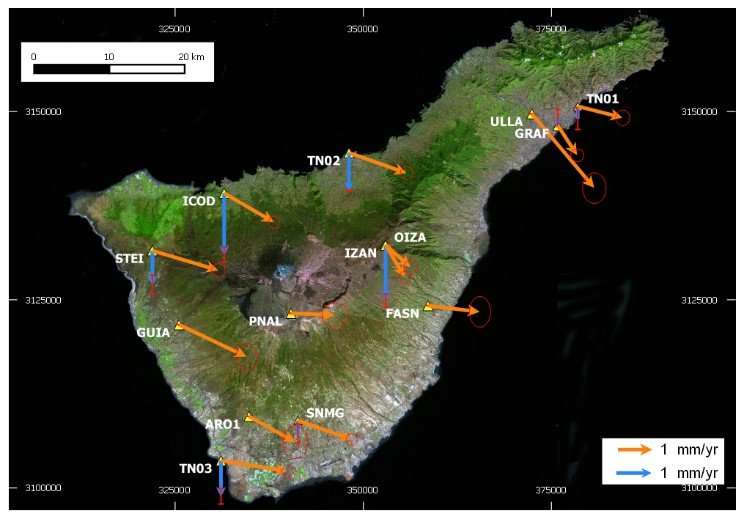The islands of Tenerife and Gran Canaria could be closer together within millions of years

Experts from the University of Seville and the Laboratory of Astronomy, Geodesy and Cartography at the University of Cadiz have published a study reporting the behaviour of the geodynamic area of the island of Tenerife. Although the behaviour between the two areas was not the aim of the study, it has been observed that Tenerife and Gran Canaria are closing distance, which could be caused by the action of a fault between the two islands.
"The values of interplate displacement detected between the island of Tenerife and Gran Canaria are millimetric, for which reason, given the distance between the islands (approximately 64 kilometers), it would take millions of years for them to come together," says the University of Seville teacher Cristina Torrecillas.
Since the volcanic crisis of 2004, there has been a gravitational sinking or isostatic adjustment of Teide. This phenomenon was detected thanks to data provided by the GPS stations situated in the areas surrounding the island of Tenerife with millimetric values each year. On the other hand, it has also been observed that the northeast fissure is widening, possibly due to the action of a secondary fault that isolates the Anaga mountain range in the central part of the island.
After the Teide volcanic crisis in 2004, triggered by a multitude of minor earthquakes, the need to control the geodynamics of the island of Tenerife arose, for which reason researchers established seven initial points of reference distributed around the island. Two of these were set up in constant observation mode and the rest working in periodic annual campaigns. From 2008, other public bodies placed seven new points of reference with continuous public-access observation stations. Together, these two networks are known as the TEGETEIDE GNSS network, which provides the data on which this study is based.
"Volcanology is a complex and multidisciplinary science, but it is more than verified that surface deformation in active zones usually preceded seismic or volcanic events. This technique has been applied in the case of the recent eruption on the neighbouring island of El Hierro, but it was not until 2015 that a study was published in the journal Science on predictive action with magmatic intrusions," explains the researcher.

More information: I. Barbero et al, Assessment of ground deformation following Tenerife's 2004 volcanic unrest (Canary Islands), Journal of Geodynamics (2018). DOI: 10.1016/j.jog.2018.06.002
Provided by University of Seville





















